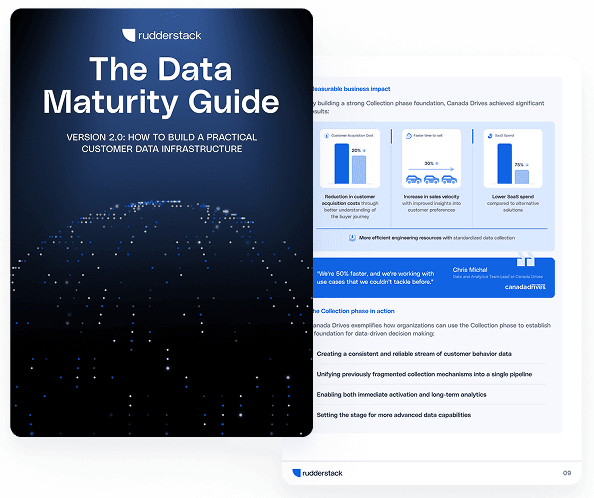Agent data platforms, CDPs, and the new customer memory layer for AI agents

Sierra recently introduced a concept they’re calling the Agent Data Platform (ADP), positioning it as the intelligence layer powering AI agents that directly engage customers. The pitch is compelling:
A unified customer memory paired with AI-driven decisioning that autonomously delivers the next best action.
But it also raises the question: Is this a genuinely new paradigm, or familiar ideas wrapped in an AI-first narrative?
And more importantly: Is this where Customer Data Platforms (CDPs) will evolve in the age of agents?
The two pillars of an Agent Data Platform
1. Memory layer: The customer brain
As Sierra described it, the memory layer represents “Everything your company knows about a customer — across sessions, channels, and systems.”
This spans:
- Structured data: CRM, billing, transactions
- Unstructured data: emails, chats, support transcripts
- Real-time signals: app behavior, product events, session context
It’s the contextual foundation that AI agents need to make intelligent, personalized decisions.
2. Intelligent decisioning: The action engine
Once unified memory exists, the next strategic question becomes:
“What should happen next?”
- Personalize the response?
- Trigger fulfillment?
- Proactively intervene to retain a customer?
- Escalate to a human?
The aspiration is clear: Autonomous, proactive, real-time engagement, not just messaging automation.
Isn’t this what CDPs are supposed to do as well?
Historically, CDPs like RudderStack have delivered the memory foundation: Collect → unify → activate customer data, everywhere it’s needed
The CDPs support
- Real-time behavioral + warehouse-native data
- Streaming updates from product, support, and commerce systems
- Identity stitching and a full customer 360
- Profile and analytics APIs for personalization
CDPs have also added capabilities to track agentic interactions like chats, as RudderStack’s recent AI tracking plan.
However, CDPs don’t have the agent decisioning layer of ADPs, at least not right now. While some CDPs like TreasureData and Hightouch have added a decisioning layer, that is more for emails and lifecycle marketing, not the real-time decisioning for agents that comes bundled with ADPs.
However, the decisioning logic need not exist in a single product. There are a bunch of existing agentic workflow tools like Voiceflow, which can be combined with a memory layer of a CDP to build the same functionality. There are pros and cons of using a unified memory/decisioning stack or a composable one.
The future of ADP: Single vendor or composable stack?
There are two emerging architectural routes:
1. Single-vendor ADP
Simple to start: one platform, unified workflows. But this approach sacrifices flexibility and creates deep lock-in if the vendor falls behind in one area.
2. Composable ADP
An alternative composable architecture would include the best-of-breed tools, such as:
- A CDP like RudderStack → unified memory + real-time pipelines
- Workflow tools like Voiceflow, or homegrown AI agents → decisioning + execution
Some advantages of a composable architecture include the following:
- Ability to use best-of-breed
- The buyer personas are different (data team vs. growth/ops team) and they often need different capabilities from the product – developer experience vs. ease of use.
- Teams want flexibility to swap tools without replacing the entire stack
Final take
The Agent Data Platform isn’t brand-new. But it is the right architecture for what’s next.
Zooming out, the rise of ADPs reflects three big shifts:
✨ Apps become conversations
⚡ Customer context becomes real-time
🤖 AI agents own execution instead of humans clicking buttons
As those shifts accelerate, the memory layer becomes critical infrastructure.
Whether it lives in a single platform or a composable stack, the important question isn’t what you call it. It’s whether your agents can rely on it to make fast, accurate, governed decisions at scale.
Published:
November 19, 2025

Event streaming: What it is, how it works, and why you should use it
Event streaming allows businesses to efficiently collect and process large amounts of data in real time. It is a technique that captures and processes data as it is generated, enabling businesses to analyze data in real time

RudderStack: The essential customer data infrastructure
Learn how RudderStack's customer data infrastructure helps teams collect, govern, transform, and deliver real-time customer data across their stack—without the complexity of legacy CDPs.

Scaling data products starts with fixing the foundation: Five lessons we’ve learned
Most teams don’t have a modeling problem—they have a foundation problem. This post shows how to standardize your pipeline, put one owner in charge, and use observability to scale data products.







